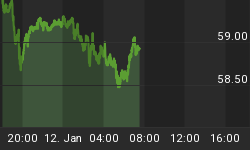Bubbles, the final economic frontier. This is the voyage of the Market. Its multi-year mission is to explore strange new manias; to seek out new players and new sources of credit; to boldly go where no Market has gone before. (Star Trek music playing in the background).
While a "bubble" is not as vast as the space explored by the starship Enterprise, it can trap many unsuspecting investors within its boundaries. A bubble, for the purposes of this article, is a speculative mania directed towards investment deemed important. The investment can be anything from vehicles traditionally considered investments (stocks, bonds, real estate) to something organic like a flower. Yes, you read that correctly, a flower!
A characteristic of a bubble is the public's valuation of investments at levels previously unimaginable. The valuations reach unimaginable levels when the implied value of the investment is greatly distant from its intrinsic value. The public may not realize a bubble exists since rationalizations of the implied value are always abundant. For those realizing the existence of a bubble, the investment quickly becomes a hot potato. When there are enough hot potatoes, the mania's peak arrives and the crash begins.
For example, suppose a company produces bobble head dolls of St. Louis Cardinals pitcher Seth Maness. The company produces them for $2.00 and sells them for $4.00. The company calls these dolls "SethPet". Initially, the dolls are available at local retail outlets and sales are commensurate for what you might expect a player of Mr. Maness' ilk to command (Seth is a relief pitcher who began his career in 2013). To spur sales of the SethPet, the Cardinals have a SethPet bobble head doll night at Busch Stadium. The team distributes twenty-five thousand dolls on a warm summer night. Children love them! The retail price of the doll remains at $4.00.
Then something interesting happens. Mr. Maness creates a Twitter and Facebook page for the SethPet. Soon, children and teens are flocking to Facebook and Twitter for daily updates on the SethPet. Cell phone text traffic experiences a pronounced increase on updates to both social networking sites. The company producing the SethPet experiences increased in demand for its product. Understanding economics, the company doubles the price of the doll.
A Cardinal broadcast appears on the ESPN Sunday night game with Mr. Maness pitching and the announcers mention the SethPet doll craze. The game receives international attention and now orders for the dolls come from overseas. Enterprising youngsters, who earlier bought extra dolls, auction their supply on eBay. Miraculously, dolls are fetching as much as $20.
The producing company's marketing department develops a limited edition SethPet. The limited edition version sells in stores for $50. Soon, these models appear in eBay with auction sales of $100 commonplace. All the while, Mr. Maness' successes on the field multiply. Sir Richard Branson decides he wants to take a few SethPets into earth's orbit. When returning from his space adventure, Sir Richard auctions these SethPets for a record $1,000 each with the proceeds going to charity.
As luck would have it, Mr. Maness, hurt his arm and did not recover from ligament transplantation surgery. The Cardinals replaced him with another promising youngster. Without the constant media exposure, interest in the SethPet waned. Parents began to openly question the price of the doll. eBay auctions were no longer lucrative. The St. Louis teen community, which had so thoroughly embraced SethPets, focused on the next app for their smartphone. From a peak of $1,000, the SethPet now sat unsold on retail shelves until its production ceased. Those who had bought SethPets for "investment" purposes tried in vain to dump them. Eventually, a Chinese distributor offered $0.50 for each SethPet.
While the previous example dramatizes speculative bubbles, such manias are a part of investment history. The first recorded speculative bubble was the Tulip mania in Holland beginning in November of 1636 and ending in May of 1637 (the flower reference from earlier). During this time, the peak price of a tulip was 20 times that at the beginning of the mania. The mania reached its peak in February of 1637 and fell to its original starting point a mere three months later. Perhaps more importantly, at its peak, the price of a tulip was 10 times the yearly wage of a skilled craftsman.
Manias occur due to the innate human instinct of herding. The investment public tends to act as followers. Manias, or extreme bull markets, climb a "wall of worry". We use this term since people are afraid of being left out of what they perceive is broad participation (everyone is doing it so it must be good). The rationality of the herding impulse is ignored during the bubble. Few recognize they are in a bubble which is why so many are caught in it.
It takes keen discipline, or a detached investment analysis to understand bubbles. Alternately, you could implant Mr. Spock's Vulcan brain as your own and understand that most speculative bubbles are "illogical".
















